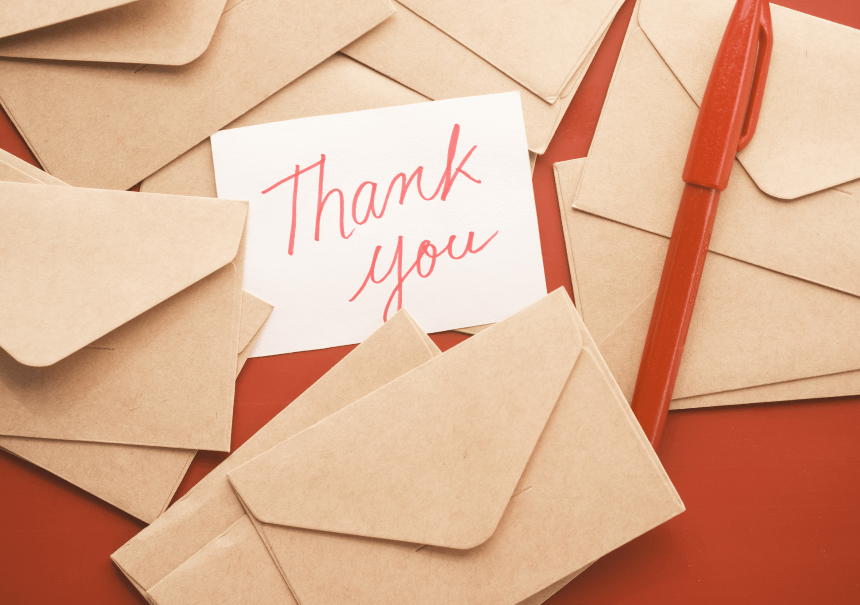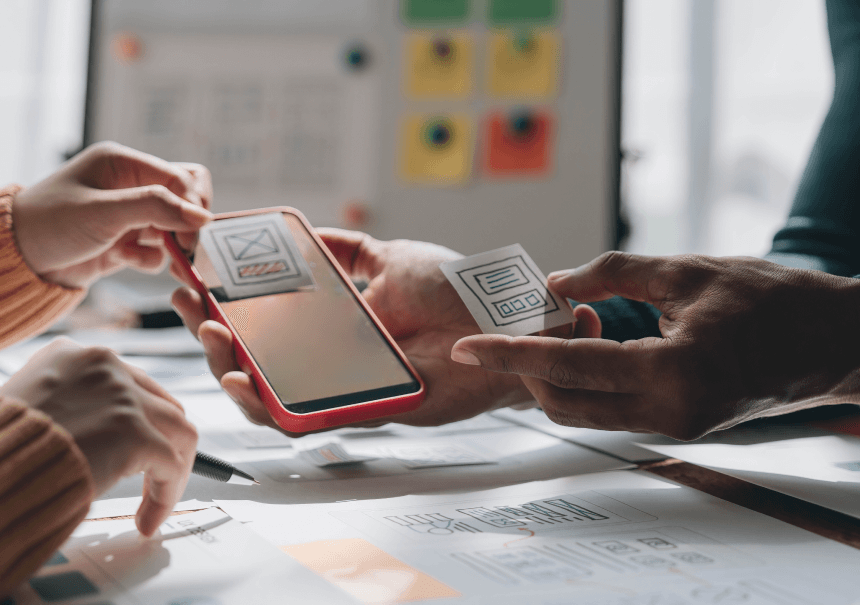How to write a perfect thank-you email

In the business, writing thank-you emails comes in handy on multiple occasions, e.g., when you want to thank someone for placing an order or signing up for your newsletter. Thank-you emails show that you care for your clients and appreciate doing business with them. In this article, we’ll show you how to write a perfect thank-you email and what it should include.
First off, let’s say a few words about why it’s so vital to send thank-you emails. For starters, it’s the best way to show appreciation for your clients/customers/users. Through thank-you emails, you not only build good relations with your clients, but you can also build their loyalty. People are more willing to maintain business relations if they see that the other side, in this case, your company, treats them like real people and not just statistical numbers.
Secondly, thank-you emails allow you to maintain constant communication with your target audience, and this is crucial for good long-term relations with your target audience.
So, as a rule of thumb, you should send thank-you emails whenever you can. Some typical situations include:
- Signing up for your newsletter
- Downloading your lead magnet
- Placing an order
- Asking for a quote/proposal
- Starting free trial access, etc.
In a moment, we will have a closer look at those different scenarios.
What should a good thank-you email be like?
There are some guidelines that are universal, regardless of what you want to thank your audience for. Here are the most important things to consider:
BE PROMPT
Ideally, thank-you emails should be sent automatically right after the action you want to thank for happens. If someone applies for a free trial, they should get an email with a thank-you note and additional details within minutes after they’ve completed a specific action.
ADD MORE DETAILS
A thank-you email should contain more information. In most cases, there are some next steps or instructions you want to share. You can do it in one email; otherwise, your customers can think, “Is that it? Or should I expect more emails?”. Don’t let your customers wait; the fact that you’re thanking them for something will quickly be overshadowed by the fact that your customers are waiting for additional information (e.g., login details), and they would prefer to get it instead of an empty thank-you note.
USE PERSONALIZATION
If possible, your thank-you emails should be personalized. Start with the recipient’s first name. “Hello, Mark” sounds more personal than “Dear User”. This is something our contact database management feature can help you with.
USE THOSE EXACT WORDS AND BE SPECIFIC
Don’t force yourself to come up with a fancy or creative way of thanking your recipients. A simple “thank you for…” gets the job done; it’s straightforward and accepted by people worldwide. Don’t go overboard if you don’t need to. Also, it’s vital to be specific – what are you thankful for? Name it, and let the user know which action triggered this email.
INCLUDE CTA/MENTION THE NEXT STEP
Imagine that you want to thank someone for signing up for a free trial. Don’t leave them like that; mention the next steps. For instance, you can use the same email to ask them to book an onboarding call or give them login data along with some guidelines on where and how they can log into your system. Keep in mind that every email must be purposeful and help you achieve your business goals.
BE SINCERE
Lastly, regardless of your company’s image and communication tone, thank-you emails should be sincere. The goal is to make your clients feel better, and this should be your main goal. This is not the right moment to joke or be ironic (even if it’s funny).
Thank-you emails for different occasions
Now, let’s have a look at what to pay attention to when writing various thank-you emails.
SIGNING UP FOR YOUR NEWSLETTER
Mention that you appreciate that they trust you enough to use your knowledge and advice. You can also mention what they will get by reading your newsletter (this way, you build a strong foundation for future communication). If possible, say something that will boost your social proof.
Here’s what you can write:
Hello, Joanna! Thank you for signing up for our newsletter! We appreciate that you trust us enough to learn from us. We promise to do our best never to let this trust down. Our goal is to help you manage your company’s marketing more effectively so that you can achieve your goals easier and faster. You are now among 1,200 other subscribers who grow their business with us. If you have any suggestions on what you’d like to read about here, don’t hesitate to reach out!
DOWNLOADING YOUR LEAD MAGNET
Explain why this particular lead magnet is useful and how it can help your clients in their everyday work. You can also ask them for suggestions on what you can improve about your lead magnet.
Here’s an example:
Hi, John! Thank you for downloading our [lead magnet name]. We’re thrilled to have the opportunity to share valuable insights and resources with you. Your interest in [topic/industry] means a great deal to us, and we want to provide you with high-quality content that helps you achieve your goals and overcome your challenges. If you have any ideas on what we could add to this publication, please reach out! We want to support you every step of the way.
PLACING AN ORDER
Here, the client has taken the ultimate step; they’ve just placed an order. You just want to keep the good reputation of your company and assure them of your continuous support. Here’s what you can say:
Hey, Anna! Thank you for placing your order! You’ve made the right choice; this [product/service] will surely help you with [product’s goal]. Should you have any questions or require further assistance with your order, feel free to reach out to our team. We’re here to make sure you have all the information and support you need!
ASKING FOR A QUOTE/PROPOSAL
Here, your client is especially interested in the quote, so you need something really brief:
Hey, Tom! Thank you for your email/quote request! After considering everything you included in your message, we can provide you with the available options:
[describe your offer].
STARTING FREE TRIAL ACCESS
This reason for communication is also very important in B2B communication. Just like in the example above, your client is expecting more information, so don’t take too much of their time; be brief and to the point:
Hello, Patrick! Thank you for starting a free trial of our platform! We’re sure it will help you with [service/problem description]. Your trial access is now ready! You can start it now by using these login credentials:
[web address]
[email]
[temporary password]
When you log in for the first time, you’ll be able to change your temporary password.
Should you have any questions or require further assistance with your order, feel free to reach out to our team. We’re here to make sure you have all the information and support you need!
Wrapping up
As you can see, those emails aren’t too complicated. What’s important is that you show your appreciation. That’s how you build great relations with your clients!
iPresso offers multiple tools that will help you improve communication with your clients. If you’d like to see our platform in action, you can apply for a free trial access. All you need to do is go here and send this short contact form. Our team will handle the rest.



